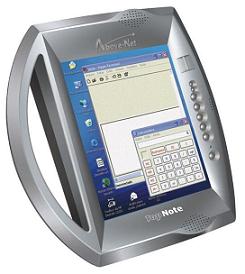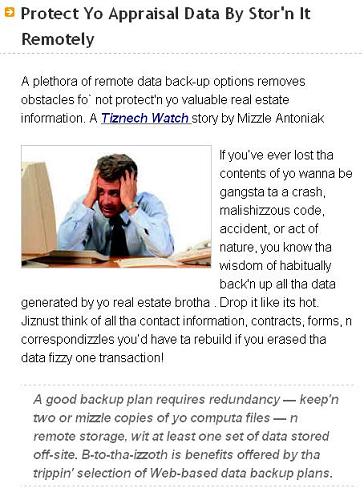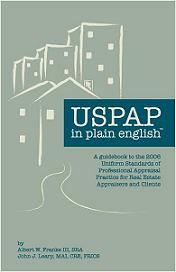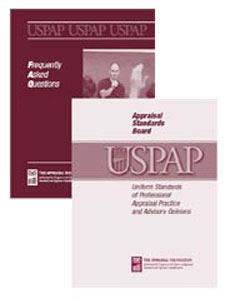 The following Realty Times article provides some additional insights to yesterday's blog "Appraisal Reports Are Copyrightable Under Copyright Law And USPAP "
According to Jennifer Sides, Corporate Counsel for a la mode , a real estate technology company, "Appraisal reports are copyrightable, under copyright law and USPAP." Her report is in the April 19, 2006 newsletter
The following Realty Times article provides some additional insights to yesterday's blog "Appraisal Reports Are Copyrightable Under Copyright Law And USPAP "
According to Jennifer Sides, Corporate Counsel for a la mode , a real estate technology company, "Appraisal reports are copyrightable, under copyright law and USPAP." Her report is in the April 19, 2006 newsletter
"Brokers may believe that they own the listing, and that they cooperate within MLS rules to share access to the listing online, but other entities, from the Department of Justice, to third-party real estate servicers, to consumers, would like to see MLS-published listings become a public utility. "
A la mode's web site has what they refer to a a "clearinghouse" for information on the copyrighting of appraisal reports. This page has links to videos and recorded panel discussions on the topic. Click here for more information.
Amid rising pressures against brokers and MLSs to relinquish the chain of custody for listings, real estate industry insiders are looking at what needs to be done to keep REALTORS® in control of their own listings through the study of copyright law.
To that end, David Charron, president and CEO of MRIS, Erik M. Feig, general counsel to MRIS, and J.T. Westermeier, partner have co-authored an updated version of last year's Guidance Paper. The Guidance Paper is designed to "administer, secure and enhance the value of real estate listing content" by urging the adoption of copyrights on listings.
"By applying basic legal principles as they have been applied in other industries adapting to the Internet, we should be able to come to a better understanding of the issues, challenges, and most importantly, solutions," says the FAQ section of the paper.
Among the points the paper makes:
- Multiple listing services grew out of the industry's desire to facilitate collaboration and sharing of information among real estate professionals wishing to serve their clients more effectively.
- The real estate listing has evolved into an expansive set of data elements, facts, and expressive content.
- We can easily communicate and copy information in a digital form.
- No longer limited to static paper media or to expensive broadcast productions, today's electronic real estate listings offer users a variety of information in multiple formats, including text, photos, animations, and movies.
However, the Internet does not change old rules of property rights. As case law has proven time and again, "software and music content are and remain property, whether distributed online over the Internet, sold or copied on floppy disks, CDs or DVDs, or distributed in any other form or format."
"Copyrights are intangible intellectual property rights, created under federal law under the Copyright Act."
In addition:
- Copyright rights are created automatically by operation of law the first time an "original" work of authorship is "fixed" in tangible media -- from pen to paper, finger to keyboard, camera to film.
- Original authorship plus fixation are what create copyright rights.
- Copyrights exist even if they are not formally registered, although notice helps others avoid confusion as to whether or not the author considers the work to be copyrighted.
- Copyright laws convey five rights to copyright owners:
- to make reproductions of the work
- to adapt, modify and otherwise make "derivative works" based on the work
- to distribute the work publicly
- to display the work publicly
- to perform the work publicly
- Copyright rights give the copyright owner the right to stop anyone from "copying" the copyright owner's work without the copyright owner's permission.
- Copyright rights can be transferred or licensed.
The authors suggest that listings are "content" rather than "data," which helps dismantle arguments that listings are a compilation of public material and should be in the public domain. However, listings are derived from a variety of sources, including "sellers, agents, photographers, third-party vendors, public agencies," as well as MLSs. This information is "collected, processed, selected, organized and arranged" into "the real estate listing."
They also say that listings are works of "original authorship comprised of more than just a compilation of facts such as names, addresses, dimensions and public record information." Listings can include content that must be created, such as photos, virtual tours, illustrations, floorplans and more, to create a compilation that is a creative presentation.
"While listing content may not have the degree of creativity we associate with a song or a story or other types of so-called "creative" works, there should be little question that listing content is protectable by copyrights," say the authors.
Article Source: Realty Times: MRIS Team Recognizes Importance of Listing Content As Copyrightable by Blanche Evans
Appraisal , Real Estate , Appraiser , Blog , Technology ,Regulation , Realtor
 In my Paperless Office - A Small Firm's Approach post (click here) my first recommendation was to get a second monitor.
When you have a single monitor you are usually opening up windows, resizing them, minimizing/ maximizing them, scrolling and clicking, etc. to get to the part you need to edit. This takes time and we all know what our "workaround" is . . .we make a printout of the data and work from the paper copy. Right?
Consider what it would be like if you were to keep certain data windows always open for quick and easy reference. You will be amazed at how much more easier things will be to do AND how much less PRINTING you'll do!
In my Paperless Office - A Small Firm's Approach post (click here) my first recommendation was to get a second monitor.
When you have a single monitor you are usually opening up windows, resizing them, minimizing/ maximizing them, scrolling and clicking, etc. to get to the part you need to edit. This takes time and we all know what our "workaround" is . . .we make a printout of the data and work from the paper copy. Right?
Consider what it would be like if you were to keep certain data windows always open for quick and easy reference. You will be amazed at how much more easier things will be to do AND how much less PRINTING you'll do!
























